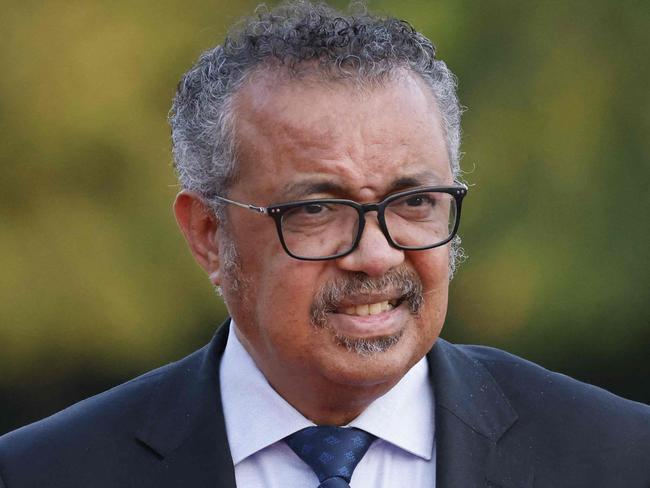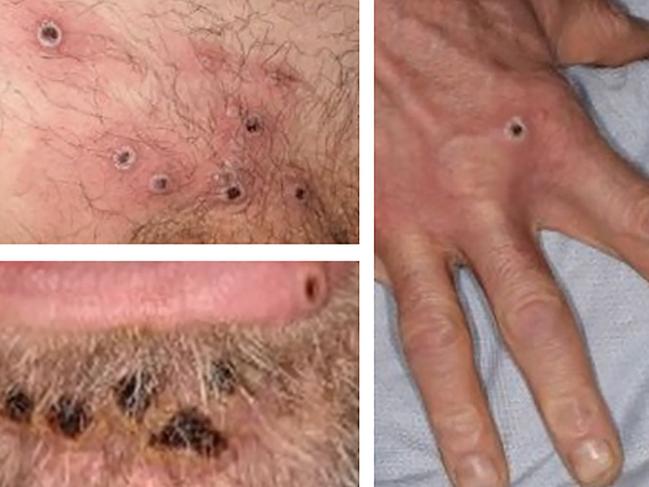Monkeypox cases rise in Australia as WHO declares global outbreak an emergency
Australia has the highest number of monkeypox cases in the Western Pacific Region, as official figures show some have been locally acquired.
National
Don't miss out on the headlines from National. Followed categories will be added to My News.
Australian cases of monkeypox may not be spiralling at rates seen in other countries, but they are growing and a “small number” of cases have been locally acquired, latest data reveals.
As of July 23 there were 44 cases of monkeypox, including 24 in NSW, 16 in Victoria, two in the ACT, one in Queensland and one in South Australia.
“While the majority of the 44 cases acquired their infection overseas, a small number of cases have been acquired in Australia,” a spokesman for the Department of Health and Aged Care told News Corp Australia.
Latest World Health Organisation (WHO) case data (from January 1 to July 21) shows Australia has the highest number of cases in the Western Pacific Region, and is the only country in the double digits in the region.
Comparatively, Singapore has six cases, China and New Zealand each have two, and the Republic of Korea and New Caledonia have one each.
Countries with cases in the thousands include Spain (3125), Germany (2191), the UK (2137), France (1453), and the US (2102).
The WHO has declared the growing monkeypox outbreak a global emergency, with 16,000 cases in 75 countries.
Infectious diseases expert Dr Paul Griffin said globally case numbers are following an “alarming trajectory”.
“Two weeks ago, we were below 10,000. Now we're over 16,000. It is increasing in … case numbers around the world and it’s a bit of an alarming trajectory that clearly needs a response to try and slow that down,” he told ABC’s Radio National.
Dr Griffin warned there is the potential for cases to not be picked up.
“That sort of pressure on the healthcare system and limited capacity to deal with the normal things does raise the potential for missed cases,” he said.
“We need to make sure that we address the Covid issue … and make sure we do continue to educate our clinicians and the general public about this, so that the chance of missing cases is as low as possible.”
A vaccine for the virus and treatments are available in the National Medical Stockpile but global supply is “fairly constrained”.
“Nobody predicted the gravity of this situation,” Dr Griffin added.
Deakin University epidemiology chair Catherine Bennett said the majority of the cases in Australia had been linked to international travel.
“We are not seeing a lot of local transmission here. But at the same time when you have the numbers getting up around the world it’s much harder to know when someone might have been exposed and to manage this risk well,” she told Sky News.
WHO director-general Tedros Adhanom Ghebreyesus said these numbers were a massive rise on the 3040 cases in 47 countries a month ago.

“So in short, we have an outbreak that has spread around the world rapidly, through new modes of transmission, about which we understand too little and which meets the criteria in the International Health Regulations,” he said in a statement.
“For all of these reasons, I have decided that the global monkeypox outbreak represents a public health emergency of international concern.”
WHO’s assessment lists the global risk of monkeypox as moderate globally and in all regions, except in the European region where the risk was high.
The Department of Health and Aged Care spokesman said the National Incident Centre had been activated and “is working closely with the states and territories, through the Australian Health Protection Principal Committee and its subcommittees, to co-ordinate a national response to monkeypox.”
“Australia has been implementing an enhanced nationally co-ordinated response since May 2022, and has already progressed activities to address the WHO recommendations,” he said.
“As with any infectious disease, state and territory Public Health Units are responsible for patient management and clinical support, as well as implementing any transmission prevention and control measures, such as isolation.”

He said national expert groups have developed guidelines for monkeypox treatment and vaccination; infection prevention and control; and case and contact management.
On June 1, monkeypox virus infection was listed for an initial six months on Australia’s National Notifiable Diseases List (NNDL) to enable better reporting and data sharing.
“The Department of Health and Aged care is working closely with peak bodies and organisations to improve awareness and encourage people at risk and health professionals to be aware and alert to the symptoms,” the spokesman said.
“An MPX (monkeypox) vaccine (ACAM2000®) and a treatment are available in the National Medical Stockpile. State and territory governments can access these treatments on a request by the chief health officer or their delegate.”
While the majority of cases in Australia have been in men who have sex with men, they are not the only ones at risk. Monkeypox is listed as a zoonotic disease.
“Whilst a number of the recently identified cases have self-reported as gay, bisexual, or other men who have sex with men, monkeypox has not been described as a sexually transmitted disease, though it can spread through direct intimate contact during sex,” said the spokesman.
The department’s monkeypox information website says people who have had close physical contact with a monkeypox case are most at risk, as well as Australian travellers returning from, or going to, countries with identified cases.
“Infants, young children, pregnant women and people who are immunocompromised are more at risk of developing severe disease,” it says.
Since early May 2022, cases of monkeypox have been reported from countries where the disease is not endemic, and continue to be reported in several endemic countries.
Most confirmed cases with travel history reported travel to countries in Europe and North America, rather than West or Central Africa where the monkeypox virus is endemic.
This is the first time that many monkeypox cases and clusters have been reported concurrently in non-endemic and endemic countries in widely disparate geographical areas.
More Coverage
Originally published as Monkeypox cases rise in Australia as WHO declares global outbreak an emergency




